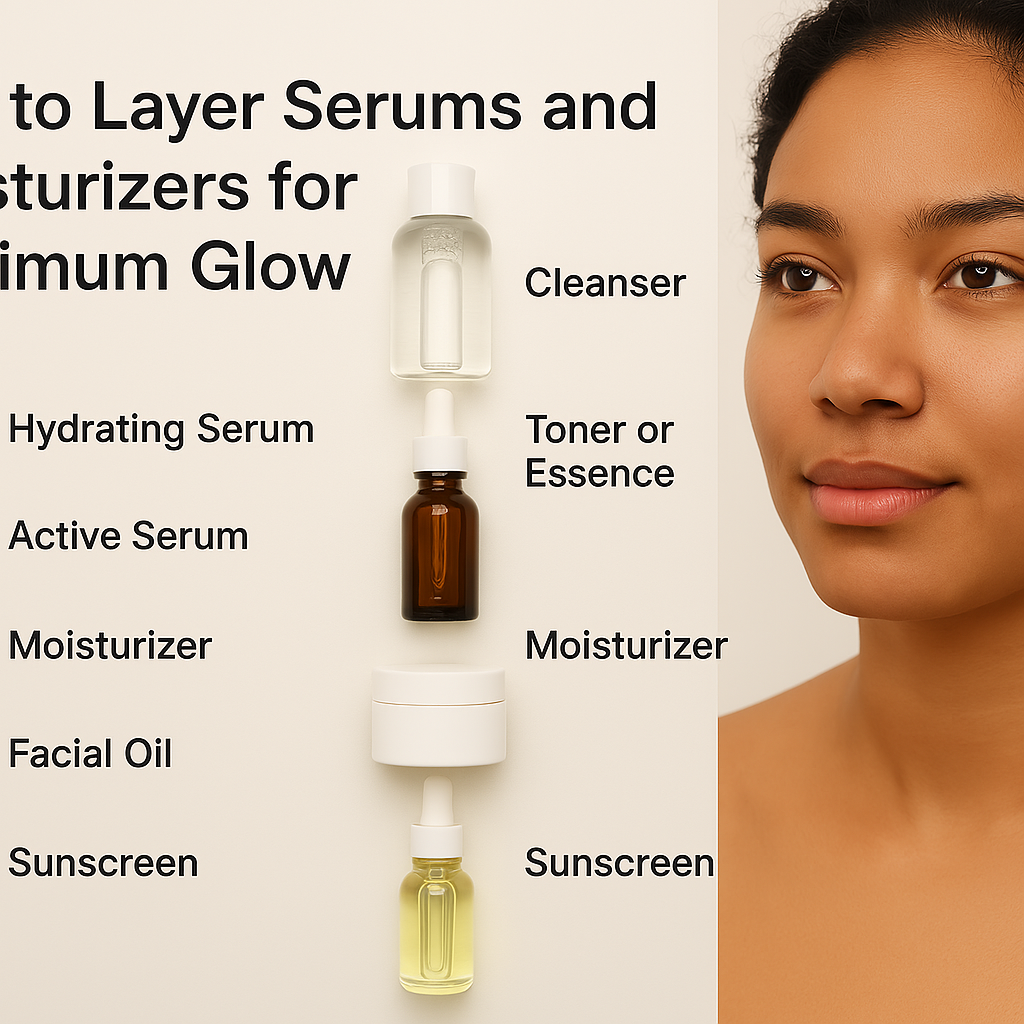Creating a radiant, dewy complexion isn’t just about the products you choose—it’s also about how you apply them. Layering your serums and moisturizers in the correct order unlocks their full potential, supercharging hydration, boosting brightening ingredients, and banishing dullness. In this in-depth guide, you’ll learn the science behind skincare layering, step-by-step routines for morning and night, expert tips to avoid common mistakes, and customization strategies for every skin type. Get ready to glow from the inside out.
Why Proper Layering Matters
Incorrectly applying products can block active ingredients, lead to pilling, or even cause irritation. Think of your skincare routine like cooking a delicate sauce: add the ingredients in the right sequence, and every flavor shines. Do it backward, and nothing blends properly.
- Maximizes absorption: Thinner, water-based serums penetrate first; thicker creams seal in potency.
- Prevents ingredient conflicts: Some actives (like vitamin C and retinol) neutralize each other or irritate when stacked improperly.
- Enhances results: Your skin reaps the full benefits of hydration, brightening, and repair without waste.
Understanding Textures and Terminology
Before you layer, decode product labels and textures. Here’s a quick breakdown:
- Essences: Lightweight, watery formulas that prep skin and boost hydration.
- Hydrating Serums: Thicker than essences; often contain hyaluronic acid or glycerin for moisture.
- Active Serums: Targeted treatments (vitamin C, niacinamide, retinol, peptides).
- Creams and Lotions: Emollient-rich moisturizers that restore lipid barrier.
- Oils and Balms: Occlusive layers that lock in all preceding steps.
The Golden Rule: Lightest to Heaviest
No matter your arsenal of products, always apply from the thinnest consistency to the richest. Waiting 30–60 seconds between each layer ensures full absorption and prevents product pilling.
- Cleanser
- Toner or Essence
- Hydrating Serum
- Active Serums (see table below)
- Moisturizer or Cream
- Facial Oil or Balm
- Sunscreen (AM only)
Layering Cheat Sheet
| Layer Order | Product Type | Key Ingredients | Texture | When to Use |
|---|---|---|---|---|
| 1 | Toner/Essence | Hydrating extracts, AHAs | Watery | AM & PM |
| 2 | Hydration Serum | Hyaluronic acid, glycerin | Light gel | AM & PM |
| 3 | Antioxidant Serum | Vitamin C, ferulic acid | Liquid | AM |
| 4 | Treatment Serum | Niacinamide, salicylic acid | Lightweight | AM & PM |
| 5 | Retinoid Serum | Retinol, bakuchiol | Creamy serum | PM (alternate) |
| 6 | Moisturizer/Cream | Ceramides, peptides | Cream/Lotion | AM & PM |
| 7 | Oil/Occlusive | Squalane, jojoba oil | Oil/Balm | PM (optional) |
| 8 | Sunscreen | SPF30+, broad spectrum filters | Lotion | AM |
Morning Routine: Glow and Protect
- Cleanse with a gentle, sulfate-free formula.
- Tone or mist to balance pH and prepare for serums.
- Hydrate with a hyaluronic acid serum on damp skin.
- Brighten using vitamin C or antioxidant serum to defend against free radicals.
- Treat with niacinamide or gentle exfoliating serum if needed.
- Moisturize to rebuild barrier with ceramides or peptides.
- Finish with a broad-spectrum SPF30+ for UV protection and glow.
Evening Routine: Repair and Renew
- Double cleanse if you wore makeup or sunscreen.
- Tone or essence as your base hydration step.
- Hydrating serum to plump skin before actives.
- Treatment serum (niacinamide or salicylic acid) to clear pores and calm redness.
- Retinoid on alternate nights to boost collagen and cell turnover.
- Moisturizer rich in emollients to support overnight repair.
- Facial oil or balm as an optional seal for extra moisture.
Avoid These Common Pitfalls
- Piling products too quickly and causing flaking.
- Layering thick creams before lightweight serums.
- Mixing conflicting actives without space (e.g., vitamin C + AHAs).
- Skipping sunscreen and reversing your glow gains.
Customizing for Your Skin Type
Dry Skin
- Emphasize hydrating serums and rich creams.
- Add a barrier-repairing ceramide oil.
Oily or Acne-Prone Skin
- Stick to gel-based hydrators and non-comedogenic oils.
- Use salicylic acid and niacinamide to regulate oil.
Sensitive Skin
- Introduce new actives one at a time.
- Opt for fragrance-free, soothing ingredients like centella asiatica.
Combination Skin
- Apply richer creams on cheeks and lighter gels on the T-zone.
- Spot-treat oily areas with targeted serums.
Bonus Techniques for Next-Level Glow
- Skin mist between layers to boost absorption.
- Pat, don’t rub: Tapping motions increase product penetration.
- Fridge your serums: Cooling enhances soothing and reduces puffiness.
- Weekly mask: Swap one treatment serum for a glow mask in the evening.
Your skin is unique, and understanding the art of layering transforms a jumble of products into a cohesive, powerful routine. Follow this guide, experiment mindfully, and track your progress with weekly selfies. In just a few weeks, you’ll unveil a luminous, healthy complexion that radiates confidence.
Ready to elevate your glow? Start layering smarter today—and get ready for compliments.
Want more insider tips on skincare science, ingredient deep-dives, and product roundups? Stay tuned for our next post on “Troubleshooting Your Nighttime Skincare Routine.”
